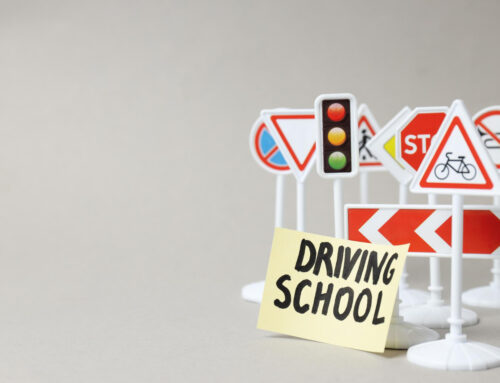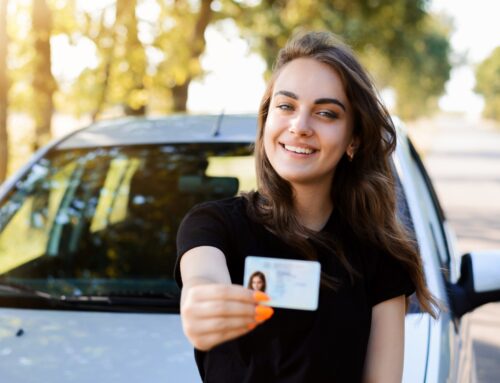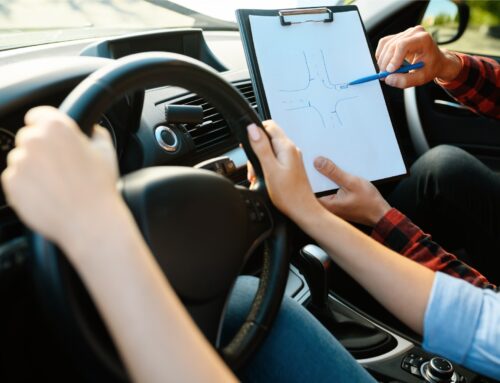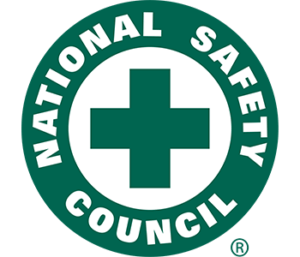A Parent’s Guide to Permits, Junior Licenses, and Supporting Your Teen Behind the Wheel in New York
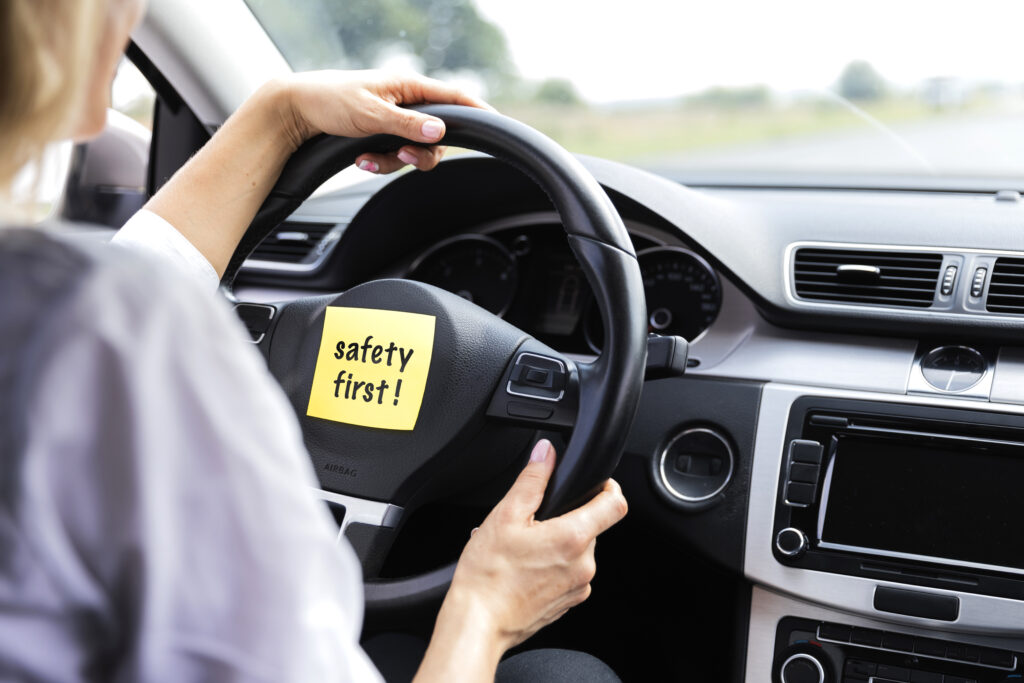 As a parent, watching your teen transition into a young adult is both exciting and nerve-wracking, especially when it comes to driving. In New York State, the rules and regulations surrounding teen driving can be complex and sometimes overwhelming. With the rise in accidents involving young drivers, it’s crucial for parents to be informed about the challenges their teens may face on the road. This guide aims to equip you with the knowledge and resources you need to support your teen during this pivotal time.
As a parent, watching your teen transition into a young adult is both exciting and nerve-wracking, especially when it comes to driving. In New York State, the rules and regulations surrounding teen driving can be complex and sometimes overwhelming. With the rise in accidents involving young drivers, it’s crucial for parents to be informed about the challenges their teens may face on the road. This guide aims to equip you with the knowledge and resources you need to support your teen during this pivotal time.
Understanding the intricacies of teen driving in New York State involves more than just knowing the legal requirements. It encompasses safety measures, the importance of driving education, and the emotional aspects of letting go. By providing a comprehensive overview of what parents should know, we can help ensure that your teen not only becomes a competent driver but also a responsible one. This guide will cover essential topics, including obtaining a learner’s permit, the graduated licensing system, and tips for safe driving.
Ultimately, this guide is essential for fostering open communication between you and your teen about driving. By addressing common concerns and providing actionable insights, we can help ease the anxiety that often accompanies this new chapter in your teen’s life. So, let’s dive into the world of teen driving in New York State and discover how you can be the best support system for your young driver.
Understanding the Graduated Licensing System
The graduated licensing system in New York State is designed to provide new drivers with a structured approach to gaining driving experience. This system consists of three stages: the learner’s permit, the junior license, and the full license. Each stage has specific requirements and restrictions that help ensure that teens develop their driving skills gradually.
To begin, teens must apply for a learner’s permit, which requires passing a written test. This permit allows them to practice driving under the supervision of a licensed adult. It’s essential for parents to actively participate during this stage by accompanying their teens on practice drives. This not only helps teens gain confidence but also allows parents to instill safe driving habits.
Once teens have held their learner’s permit for at least six months and completed a minimum of 20 hours of supervised driving, they can apply for a junior license. This license allows them to drive independently but comes with restrictions, such as not being allowed to drive with passengers under 21 unless accompanied by a licensed driver. Understanding these restrictions is vital for parents to help their teens navigate the rules effectively.
Finally, after holding a junior license for at least six months and meeting specific criteria, teens can apply for a full license. This stage signifies that they have gained enough experience to drive without restrictions. Parents should celebrate this milestone with their teens, reinforcing the importance of responsible driving as they transition into full independence.
- The graduated licensing system consists of three stages: learner’s permit, junior license, and full license.
- Active parental involvement during the learner’s permit stage is crucial for building safe driving habits.
- Understanding the restrictions of a junior license helps ensure compliance and safety.
- Celebrating the transition to a full license reinforces responsible driving behaviors.
The Importance of Driver Education
Driver education plays a critical role in preparing teens for the responsibilities of driving. In New York State, completing a driver education course is not only beneficial but can also lead to insurance discounts and a more streamlined path to obtaining a full license. These courses typically cover essential topics such as traffic laws, safe driving practices, and the dangers of distracted driving.
One of the primary benefits of driver education is that it provides structured learning. Teens often learn better when they have a curriculum to follow, which includes both classroom instruction and behind-the-wheel training. This combination allows them to grasp theoretical concepts while applying them in real-world scenarios. Additionally, many driving schools, such as Bells Auto Driving, offer comprehensive programs that cater to the unique needs of young drivers, ensuring they receive the best education possible.
Moreover, driver education courses often include discussions about the consequences of reckless driving, such as accidents, injuries, and legal repercussions. These conversations are crucial in shaping a teen’s attitude towards driving. By understanding the potential risks, teens are more likely to adopt a cautious approach and prioritize safety on the road.
Parents should encourage their teens to enroll in a reputable driver education program. This not only enhances their driving skills but also fosters a sense of responsibility. By investing in their education, parents are ultimately investing in their teen’s safety and well-being.
- Driver education provides structured learning that combines theory and practical experience.
- Completing a driver education course can lead to insurance discounts and a smoother licensing process.
- Courses often cover the consequences of reckless driving, promoting a safety-first mindset.
- Encouraging enrollment in reputable programs is an investment in your teen’s safety.
Safety Measures for Teen Drivers
Safety measures are paramount when it comes to teen driving. As parents, it’s essential to instill a culture of safety that emphasizes responsible driving behaviors. One of the most effective ways to do this is by setting clear rules and expectations for your teen. For instance, establish a no-phone policy while driving to minimize distractions. Research shows that texting while driving increases the risk of accidents significantly, making it crucial for teens to understand the dangers of distracted driving.
Another important safety measure is ensuring that your teen understands the importance of wearing seat belts. According to the National Highway Traffic Safety Administration (NHTSA), seat belts reduce the risk of fatal injury by 45% for front-seat passengers. Make it a habit to check that everyone in the vehicle is buckled up before starting the engine. This simple action can save lives and reinforce the importance of safety.
Additionally, parents should encourage their teens to avoid driving under adverse conditions, such as during heavy rain or snow. New York State experiences various weather conditions that can affect driving safety. Teaching your teen to recognize when it’s best to stay off the road can help prevent accidents. Discussing the importance of adjusting speed and maintaining a safe following distance in poor weather conditions is also essential.
Lastly, consider enrolling your teen in defensive driving courses. These courses teach valuable skills that can help them anticipate and react to potential hazards on the road. Defensive driving techniques can significantly reduce the likelihood of accidents and empower your teen to become a more confident driver.
- Establish clear rules, such as a no-phone policy, to minimize distractions while driving.
- Emphasize the importance of wearing seat belts for all passengers.
- Teach your teen to avoid driving in adverse weather conditions.
- Encourage enrollment in defensive driving courses to enhance driving skills.
Communicating with Your Teen About Driving
Open communication is vital when it comes to discussing driving with your teen. As they navigate this new responsibility, they may have questions or concerns that need addressing. Creating a safe space for these conversations can help build trust and encourage your teen to share their thoughts. Regularly check in with them about their driving experiences, and ask about any challenges they may be facing.
It’s also essential to discuss the emotional aspects of driving. Many teens experience anxiety or fear when they first start driving, and acknowledging these feelings can help them cope. Share your own experiences and reassure them that it’s normal to feel nervous. By normalizing these emotions, you can help your teen feel more comfortable behind the wheel.
Moreover, consider involving your teen in discussions about setting driving goals. For example, they may want to work on parallel parking or improving their highway driving skills. By setting specific goals, you can help them focus on areas that need improvement while also celebrating their progress. This approach fosters a sense of accomplishment and encourages them to take ownership of their driving journey.
Finally, emphasize the importance of responsible decision-making. Discuss scenarios where they may face peer pressure, such as driving with friends who may encourage risky behavior. Equip your teen with strategies to handle these situations, reinforcing that it’s okay to say no to unsafe practices. By empowering them to make wise choices, you’re helping them become more responsible drivers.
- Establish open communication to discuss driving experiences and challenges.
- Acknowledge and normalize your teen’s feelings of anxiety about driving.
- Involve your teen in setting specific driving goals for improvement.
- Empower your teen to make responsible decisions in the face of peer pressure.
Real-World Case Study: The Impact of Proper Strategy
To illustrate the importance of proper strategy in teen driving, let’s consider the case of Sarah, a 17-year-old from New York City. Sarah’s parents were proactive in her driving education, enrolling her in a reputable driving school and ensuring she completed a driver education course. They also set clear expectations regarding safety measures, such as wearing seat belts and avoiding distractions.
Initially, Sarah struggled with parallel parking and felt anxious about driving in busy traffic. However, her parents encouraged her to practice regularly and set specific goals for improvement. They spent weekends driving together, allowing her to gain confidence in her abilities. Over time, Sarah became more comfortable behind the wheel and even took the initiative to enroll in a defensive driving course.
As a result of her parents’ support and the strategies they implemented, Sarah not only passed her driving test but also became a responsible and confident driver. She learned to navigate challenging situations, such as driving in heavy traffic and adverse weather conditions. Most importantly, she developed a strong understanding of the importance of safety and responsible driving.
This case study highlights the significant impact that proper strategy and parental involvement can have on a teen’s driving experience. By providing the right resources and support, parents can help their teens become safe and responsible drivers, ultimately reducing the risk of accidents and promoting a culture of safety on the road.
Navigating the world of teen driving in New York State can be a daunting task for parents. However, by understanding the graduated licensing system, emphasizing the importance of driver education, and fostering open communication, you can support your teen in becoming a responsible driver. Implementing safety measures and encouraging the development of driving skills will not only enhance their confidence but also ensure their safety on the road.
As you embark on this journey with your teen, remember that your involvement is crucial. Celebrate their milestones, address their concerns, and equip them with the tools they need to succeed. By doing so, you’ll not only help them become competent drivers but also instill a lifelong commitment to safe driving practices. If you have any questions or need further assistance, feel free to reach out to Bells Auto Driving for expert guidance and support.
Contact Bells Auto Driving for More Information!
FAQs
Question: What is the minimum age to obtain a learner’s permit in New York State?
Answer: In New York State, the minimum age to obtain a learner’s permit is 16 years old. Teens must pass a written test to receive their permit.
Question: How long must a teen hold their learner’s permit before applying for a junior license?
Answer: A teen must hold their learner’s permit for at least six months and complete a minimum of 20 hours of supervised driving before applying for a junior license.
Question: Are there any restrictions for junior license holders in New York State?
Answer: Yes, junior license holders in New York State cannot drive with passengers under 21 unless accompanied by a licensed driver who is at least 21 years old.
Question: What are the benefits of enrolling my teen in a driver education course?
Answer: Enrolling your teen in a driver education course can provide structured learning, potentially lead to insurance discounts, and equip them with essential driving skills and knowledge.
Question: How can I help my teen feel more confident about driving?
Answer: Encourage regular practice, set specific driving goals, and celebrate their progress. Open communication about their feelings and experiences can also help build their confidence.
Question: What should I do if my teen is anxious about driving?
Answer: Acknowledge their feelings and reassure them that it’s normal to feel nervous. Offer support by practicing together and gradually exposing them to more challenging driving situations.
Question: How can I ensure my teen’s safety while driving?
Answer: Establish clear rules regarding safety measures, such as wearing seat belts and avoiding distractions. Encourage defensive driving courses and discuss the importance of making responsible decisions.
Question: What role do parents play in their teen’s driving education?
Answer: Parents play a crucial role by providing guidance, setting expectations, and actively participating in their teen’s driving practice. Their involvement can significantly impact the teen’s confidence and safety on the road.
Question: Where can I find reputable driving schools in New York State?
Answer: You can find reputable driving schools by searching online, checking reviews, and asking for recommendations from friends or family. Bells Auto Driving is one such option that offers comprehensive programs for teen drivers.
Question: How can I contact Bells Auto Driving for more information?
Answer: You can contact Bells Auto Driving through their website or by calling their office directly. They offer expert guidance and support for teen driving education.

